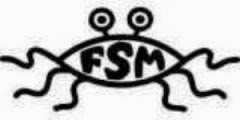 Timothy Leary was a PHD in pschyology before he was a psychedelic daredevil. His advice to 'Turn On' was informed by his formal academic training and his experiences while investigating some of the various methods employed by the peoples of every culture, in every era, to bypass the tyranny of the prefrontal cortex. There are many scolarly works on the roll the prefrontal cortex plays in our consciousness, please, like Leary, inform yourself.
Timothy Leary was a PHD in pschyology before he was a psychedelic daredevil. His advice to 'Turn On' was informed by his formal academic training and his experiences while investigating some of the various methods employed by the peoples of every culture, in every era, to bypass the tyranny of the prefrontal cortex. There are many scolarly works on the roll the prefrontal cortex plays in our consciousness, please, like Leary, inform yourself.Basically the prefrontal cortex produces an inner movie that 'the decider' watches. The producer makes sure the movie maintains a cohesion with past events and fits in with our assumptions about the future. Every mental movie is a matrix woven of incoming sensual data and the priorities of the prefrontal cortex. This production takes time, only milliseconds, but still long enough for most all of us to have had an experince of time slowing down when we are thrust into a dangerous situation like a car crash when the adrenaline of the moment forces our inner decider to watch and react directly with our sensual input.
Leary, Ginsberg, Kerouac, Kesey, Alpert and we fellow inner travelers had read The Doors of Perception, a 1954 book by Aldous Huxley detailing his experiences when taking mescaline. In it Huxley does an excellant job of defining the cultural veil through which we experience the 'real' world. Huxley lays out a framework for catching a glimpse beyond our doors via the psychedelic experience. Millions of us experimented on this fast lane to enlightenment, a few saw the light, a few tried flying off all buildings and the vast majority turned on to the fact that their awareness was anything but absolute.
Many who tried the psychedelic experience later continued their odyssey by practicing ancient asian rituals whose goals are the same, escape from the tyranny of the prefrontal cortex, but whose much safer methods are both slower and more enduring if accomplished. For Leary to 'Turn On' was a step on the pathway to the fullness and richness of life that we all can enjoy. To 'Turn On' in the 60's meant to seek more not less.
The classic Taoist text, the Tao Te Ching, begins with the words, “The Tao that can be spoken of is not the everlasting Tao,” and many of the following pages reinforce this theme. Language – that uniquely human and most powerful of all artifacts created by our pfc – is seen as anathema to an understanding of the Tao. Similarly, when we turn to Buddhist thought, we find a systematic attempt to undo the constraints of the pfc’s conceptualizations. The Buddhist emphasis on living in the present moment can be seen as a way to avoid the constructions of past and future that are the hallmark of pfc-mediated activity. Interestingly, these traditions shared an emphasis on cultivating the mind through the practice of meditation, to integrate mind and body and to quiet the incessant chatter of our pfc-based inner narratives. - Finding the LI


